Happy Easter everyone! It’s a day for feasting and celebration, and so we’ll offer a complete meal that is easy to make but delicious.
But first, some music to enjoy while cooking. Bach’s “St Matthew Passion”:
Roast Beef
Get a suitable large cut of beef. Fattier is better; prime rib is the fattiest, but here we used a 4-5 pound (2-2.3 kg) sirloin.
Because beef is not fatty enough for us, we made a glaze from butter and Italian seasonings. Melt a stick (8 tbsp) of butter and combine it with 2 tbsp dried herbs and salt and pepper to taste.
Spread the glaze on the beef until all sides are covered. Then, place the beef in a ceramic pot, fatty side up, on a bed of either fibrous vegetables (such as celery and carrots) or wooden sticks to elevate it:
We elevate the beef because we’re going to add water to the pot to keep the drippings from burning. At the end, we’ll re-use the drippings to make a sauce. If we didn’t elevate the beef, the bottom part of the roast would be boiled rather than roasted.
Preheat the oven to 400 F (200 C), and put the beef in the oven with a layer of water in the bottom of the pot. After ten minutes reduce the heat to 300 F (150 C) and cook for 20 minutes per pound if you like medium rare beef and 23 to 25 minutes per pound if you like medium beef.
It will come out looking something like this:
Move the roast to a serving plate:
Cut some vegetables for the sauce. We used tomatoes, garlic, onion, and scallion:
Add the garlic, onion, scallion to the drippings and stir fry them on the stove for 5 minutes:
Then add the tomatoes and cook just a bit longer:
This sauce is ready to be spread over the beef.
Baked Potatoes and Roast Beets
We had space in the oven so we cooked potatoes and beets along with the beef.
The potatoes were wrapped in aluminum foil and baked individually:
The beets take a bit more preparation. We peel and dice them before cooking.
Peel the beets just as you would a potato or carrot, removing the skin. Once the skin is removed, the beet flesh will stain your hands; so we put a sheet of plastic wrap between our hand the beet during peeling.
Then dice the beets and put them in a ceramic pot for roasting:
Beets deserve a sauce, just like the beef. Ours used olive oil, garlic, butter, lemon juice, balsamic vinegar, and dried herbs:
Mix the sauce ingredients apart from the butter in a mixing bowl, then add the butter and sauce to the beets:
Cover the beets in aluminum foil and put them in the oven at 300 F (150 C) along with the beef and potatoes. At this oven temperature the beets and potatoes need about 30 to 45 minutes to cook.
When the beets are done they look like this:
Conclusion
The complete meal looks like this:
Roast beef, baked potato with sour cream, and roast beets. Plus an abundance of leftovers!
We wish you a joyful and blessed Easter!







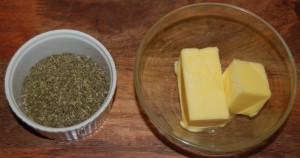
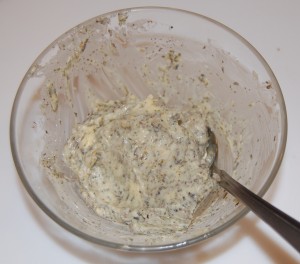

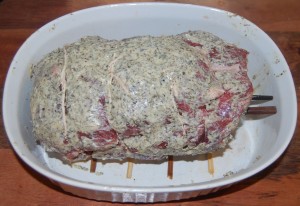
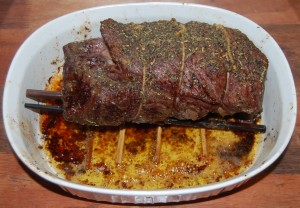
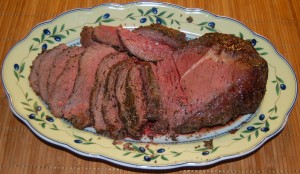
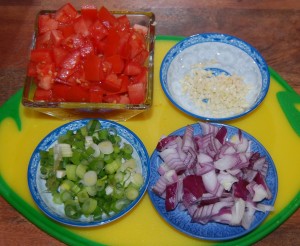
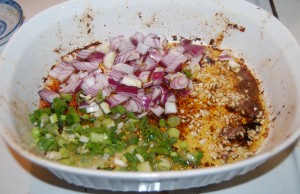
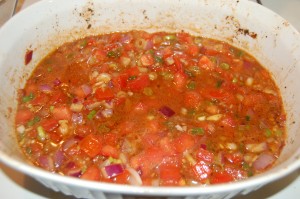

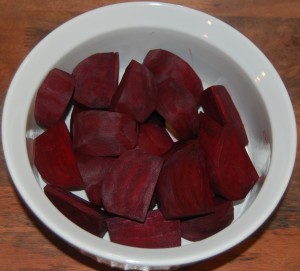
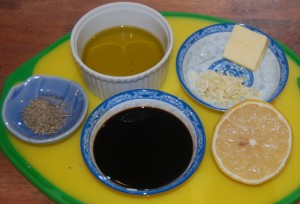
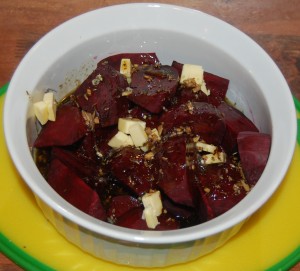
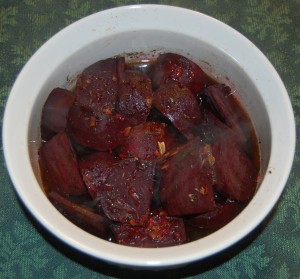
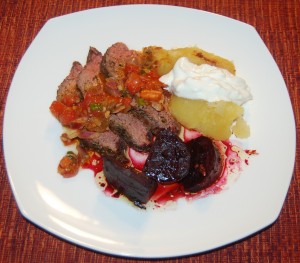




Recent Comments